Bluebells are gorgeous purple-blue, bell-shaped flowers commonly found in gardens. These attractive and delicate flowers are a treat to have in the house. One of the fascinating things is their seeds are spread by ants so if you’re lucky enough to live near a bluebell wood, they’ll also pop in your garden.
Here’s a quick-grow guide to growing bluebell flowers, in case ants don’t do their job or you’re not lucky enough to live near their woods.
More...
What are Bluebells?

Do you want to smell a delightful fragrance that is associated with happiness and love or new beginnings? Well, bluebell is going to provide you with that. They are beautiful and delicate flowers that grow in the spring and thrive in moist and shady areas.
With regards to nicknames, they are known as Hyacinthoides non-scripta, wild hyacinth, English bluebell, wood bells, fairy flowers, and bell bottles.
The bluebell plant is native to Eurasia but has been introduced to North America where it has escaped from cultivation and become an invasive species in some regions of Canada, the northeastern United States, New Zealand, India, Finland, and Sweden.
These plants are considered to be one of the most beautiful wildflowers in Great Britain. They grow in open woodland, heathland, and moorland.
The flower is a bell-shaped bluish-white flower that has a sweet scent. Hyacinthoides non-scripta is famous for being the flower that blooms in spring.
They can be found in many places around the world including North America, Australia, and Japan. They are also found in parts of Europe including France and Spain.
Known as the "Campanula" bluebells grow in many parts of the world, including North America, Europe, and Asia. The height of these plants is between 20 cm to 60 cm and the width is between 10 cm to 30 cm.
The speed at which they grow is at a rate of 5 cm per year, but they can grow faster in warmer weather.
Planting Hyacinthoides non-scripta
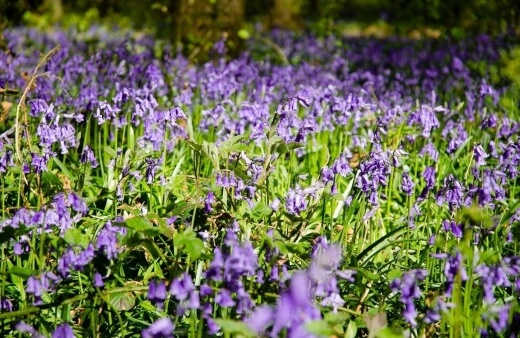
Flowers come in all colours and shapes which makes them so popular. However, many people don’t know how to take care of them properly.
Wood bells are perennials that grow well in most soils and require little maintenance. Planting bluebells in the fall ensures that they have enough time to establish roots before winter arrives.
You should plan to plant them about six inches apart since they can grow up to two feet tall. Additionally, you should plant them near trees or other obstructions if you want to enjoy their flowers up close.
There are some simple guidelines to follow before planting them for optimal growth. You should first research the best time to plant - the best time is usually March or April, but depending on your location it may differ.


Get Your Free Guide:
Master Growing Australian Natives eBook
A Must Have Complete Guide for Every Australian Garden
Get Your Free Guide:
Master Growing Australian Natives eBook
A Must Have Complete Guide for Every Australian Garden
Prepare the spot where you want to plant fairy flowers at least three weeks before they will be planted - this will give them enough time to grow roots so they can survive during the winter months when there is no sun or rain.
Then dig a hole twice as wide as the pot that you purchased your bluebells in and deep enough so that you can cover up most of the soil around your pot.
Once you start leafing and flowering each year do not cut the foliage off! The remaining leaves absorb sunlight to produce food to strengthen the plant for the next year.
If you’re looking to spread out these plants to give them a more attractive look, you can divide the bulbs after flowering. The division will occur naturally.
Getting rid of the heads after the flowering process will help avoid the dispersion of unwanted bulbs that can be dug up during the growing season.
How To Grow Bluebells in Australia
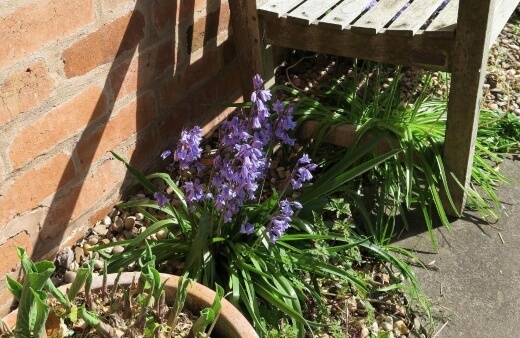
It is easy to grow bluebell plants. They prosper in the shade and need the cold, moist soil. If you live where the winters are cold and wet, then you can grow them indoors by planting them in a pot.
Growing bluebell plants is not very complicated. Once you learn how to grow them, you can enjoy the beauty of these lovely flowers all year round.
Hyacinthoides non-scripta grows best in moist, well-drained soil. They can be propagated from seed or by the division of established plants. To grow them, they need to have a shady spot with plenty of moisture and mild temperatures.
There are some easy steps that you can follow to give your wood bells the best chance of survival.
- Step 1. Choose a pot that will fit your plant and place it on a windowsill or patio which receives partial sun and has moist soil.
- Step 2. Toss some ground bark into the bottom of the pot and lightly cover with soil or compost.
- Step 3. Plant your bluebell bulb in this mixture of coconut coir, ground bark, and soil.
- Step 4. Water them well and wait for these beautiful plants to grow over time.
Pro tip: These plants can grow up to 4 feet tall and they need a lot of foliage. You will need to give them at least 6 hours of sunlight per day and they will also need to be fed once a week with a balanced fertiliser.
How to Care for Bluebells
If you want to ensure that your bluebells live for a long time, then you need to know how to take care of them. Some types of bluebells are perennial, meaning they grow for more than one season. But there are also annual varieties of this plant.
Many people plant them in their gardens every year. When planting these plants, it's important to make sure that the soil has a lot of moisture and is well-drained.
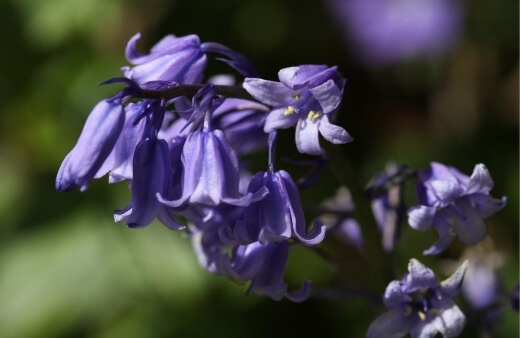
How Much Water Bluebells Need
English bluebell also need a lot of sunlight and should be planted in an area where they can get a lot of sun throughout the day. It's important to make sure that the soil is not too wet because these plants cannot tolerate standing water or high levels of humidity.
If you live in a part of the world where rainfall is scarce during certain seasons, you might want to use an irrigation system. You need to realise that these plants are epiphytes and not capable of living on their own without any help.
Bluebells like shady areas and moist soil. They also like air circulation, so make sure there is always some wind blowing through your garden or yard.
If you want to get the best results from these plants, make sure they are planted in pots with drainage holes and don't use too much water on them.
They should be watered at least once a week – around 1-inch water depth - to ensure they grow healthy and produce flowers. Watering english bluebell more than once a week may lead to watering which may cause the roots of the plants to rot, which can kill them.
Fertiliser
Most plants need fertiliser to be able to grow and flourish. Fertiliser is important for bluebells as well because it helps them grow efficiently so that they can produce large, healthy blooms.
The fertiliser ratio for bluebells is 4:1, meaning it requires 4 parts of nitrogen for every part of phosphate or potash. Our Australian garden fertiliser users guide will help you get to know different types of fertilisers and which to would work best on your plants.
Pruning English Bluebell
The number of bluebells that grow is limited by the space provided for them. It is essential for gardeners to manage the growth of their plants and keep it under control by pruning them once the leaves turn yellow. (Get the best pruning shears available in Australia here.)
Cut them at their base at the time when the plant has drained off all the nutrients from the leaves. This will help keep the plant healthy and ready for the blooming cycle.
Harvesting Hyacinthoides non-scripta
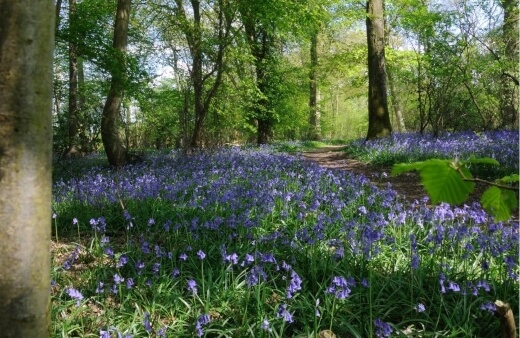
Harvesting should take place during late April and early May. Green seed pods are formed when the flowers die and decay. By July these flowers dry out and small black seeds are formed in this process. The seeds then take up to five years to bloom and form flowering bulbs.
One good way to tell is to touch the plant with your hands. If they are too brittle or dry, or if they break with the slightest pressure, then they are not ready to be harvested.
If the flowers are too tightly shut and have a visible long stem, they are not ready to be harvested. Whereas, if they are open but the flowers are still fresh, they are probably ready for harvesting.
Hence, Bluebells should be ready to be harvested when their flowers start to wilt and their stems become shorter. In simpler terms, english bluebell is ready to be harvested when the following conditions are met:
- The flowers should be fully in bloom, which means that they should have no leaves.
- They should not be drooping or bending over in any way.
- The flowers should also feel very light in weight because the flowers will lose water which reduces their weight over time.
- The flowers usually have a clear change in colour from white to light purple, which can be seen even without a magnifying glass.
- The leaves of the bluebell start turning brown and often drop off completely. There may also appear dark spots on the flowers, indicating that they are rotting and no longer good for gathering.
Companion Plants Perfect for Bluebell Flowers
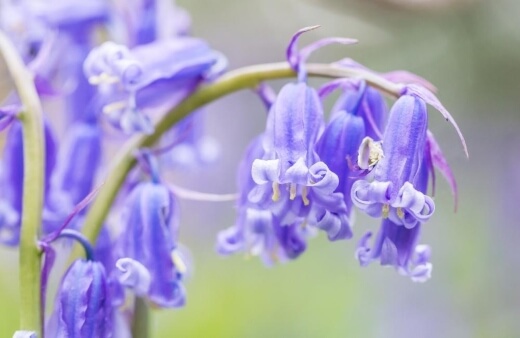
Bluebells are one of the earliest flowers to blossom in the spring. They grow in shady forest floors and open meadows. Companion plants on the other hand are plants that help each other grow better.
They can either provide extra nutrients to the other plant or provide the other plant with protection. In the case of fairy flowers, companion plants include primroses, cowslips, ferns, loosestrife, orange lilies, daisies, mulleins.
The three main ones are as follows.
- Mulberries: help with erosion control and soil improvement.
- Violets: attract pollinators and protect from pests.
- Roses: can help to keep some pests away while providing shelter for wood bells.
These plants provide a natural habitat by attracting pollinators, providing shelter, or through other means. They can also help to keep weeds at bay.
Bluebell Diseases to Look Out For
Bluebells are one of the most beautiful flowers that we can find in our gardens. They are also known to be a symbol of love and happiness. However, there is a risk that bluebells can experience diseases that can affect their growth and appearance.
Some diseases can infect these plants and cause them to die. Some of which are fire blight, powdery mildew, phytophthora, and rust.
The most common disease is bluebell rust. It causes reddish spots on the leaves and stems of the bluebells which eventually leads to the death of the plant. This disease affects mostly plants from southern regions like South Africa.
The second most common disease is a fungal infection on bluebell leaves which causes yellow or brown spots on the leaves and eventually become holes in them. These spots are often seen as black dot-like openings on the surface of leaves with yellow fringes around them.
To avoid diseases affecting the bluebells you should maintain healthy soil for them to grow in, keep your plants well-watered, fertilise your plants, remove any weeds growing near the flowers, replace flowers if they start to wilt or die off, use pesticides when needed to kill bugs like aphids and whiteflies because these will then end up harming the plants.
Pests That May Affect Your Plant
Bluebells are beautiful flowers that love to grow near streams and moist areas. They need a certain amount of moisture to flourish.
Unfortunately, they are a popular target for pests like slugs, snails, starlings, grasshoppers, sparrows, and sheep who can damage the flowers by eating away their leaves and stems.
Slugs can decimate a garden's bluebell population by over-eating them and causing them to rot in their shell. To prevent pests from harming your English bluebell, it is important to know where they are and do pest prevention work in the right places.
To avoid attracting unwanted insects, Apply judicious use of repellents and pesticides, remove weeds and scrub the ground clean in your garden.
Bluebells Common-Problems/Tips
Bluebells are a type of plant that is not easy to care for. They need to be cared for by people who are familiar with gardening and know the details of their blooming process.
Here are some tips for those who are planning to grow bluebell flowers in their garden.
- There is a key issue when it comes to bluebells which is they don't have enough sunlight, so they need to be placed in a location with at least six hours of sunlight. If there isn't enough sun, the plant won't have enough energy and won't bloom.
- It can be hard to maintain but pruning should be done to get rid of all the dead leaves on the plant in order to keep the plant healthy and thriving.
- plant them around rocks or trees - they like to hide out under things, they love compost and mulch.
- Give them a little extra water in the early spring before they start growing.
- Watch out for aphids and slugs to avoid the plant from getting infected by pests and other diseases.
Looking to add more colour to your garden? Don't miss our complete growing guides on Carnations and Mandevillas.
Bluebells Frequently Asked Questions
Do English bluebells spread?
Unfortunately, these perky plants are known to spread quite rapidly. They do seed freely and often hybridise when grown together in groups. Some gardeners love this as they are looking for large sprays of floral bells in their landscapes whereas others may not enjoy this spreading habit as much.
What is the difference between an English and Spanish bluebell?
English bluebells have a distinctive deep-blue colour whereas Spanish bluebells are lighter with a paler blue to light pink colour. English bluebell flowers also curl back at the petal tips whilst their Spanish counterparts feature a more splayed and split appearance.
Where should I plant bluebells in my garden?
Grow bluebells in moist, well-draining soil in a partially shaded spot. They thrive when grown underneath deciduous trees that provide dappled shade in spring and deeper shade in summer. In cooler climates, full sun positions can also be possible.
Do bluebells attract bees?
Yes, bluebells are known to provide bees with a great early food source in the springtime.
Do bluebells grow back every year?
Yes. Bluebell bulbs are usually persistent and multiply each passing year, simultaneously spreading many seeds in the process. This often leads to them coming back stronger each year, which can become invasive if not controlled.
Do bluebells flower in the first year?
In the first year, you will most likely only experience leaves. These plants can take a few years to start flowering profusely. Thereafter, flowering will become more widespread.
Do bluebells need lots of water?
Once planted in the ground, bluebells will not need much water unless you experience long dry periods that cause the soil to become overly dry. On average, water lightly about once per week.
How long do bluebell flowers last?
Profuse flowering will only last for about 3 to 4 weeks in good conditions. Thereafter, new bug production will start slowing as the plant moves towards dormancy.
When should you plant bluebells?
Young and ready nursery plants can be planted in spring whereas bulbs should be planted in autumn.
How tall do bluebells get?
Taller growing species can reach around 60 to 75 centimetres in height whilst smaller varieties only reach around 20 to 30 centimetres on average.
Check out our collection of blue flowers for more options.
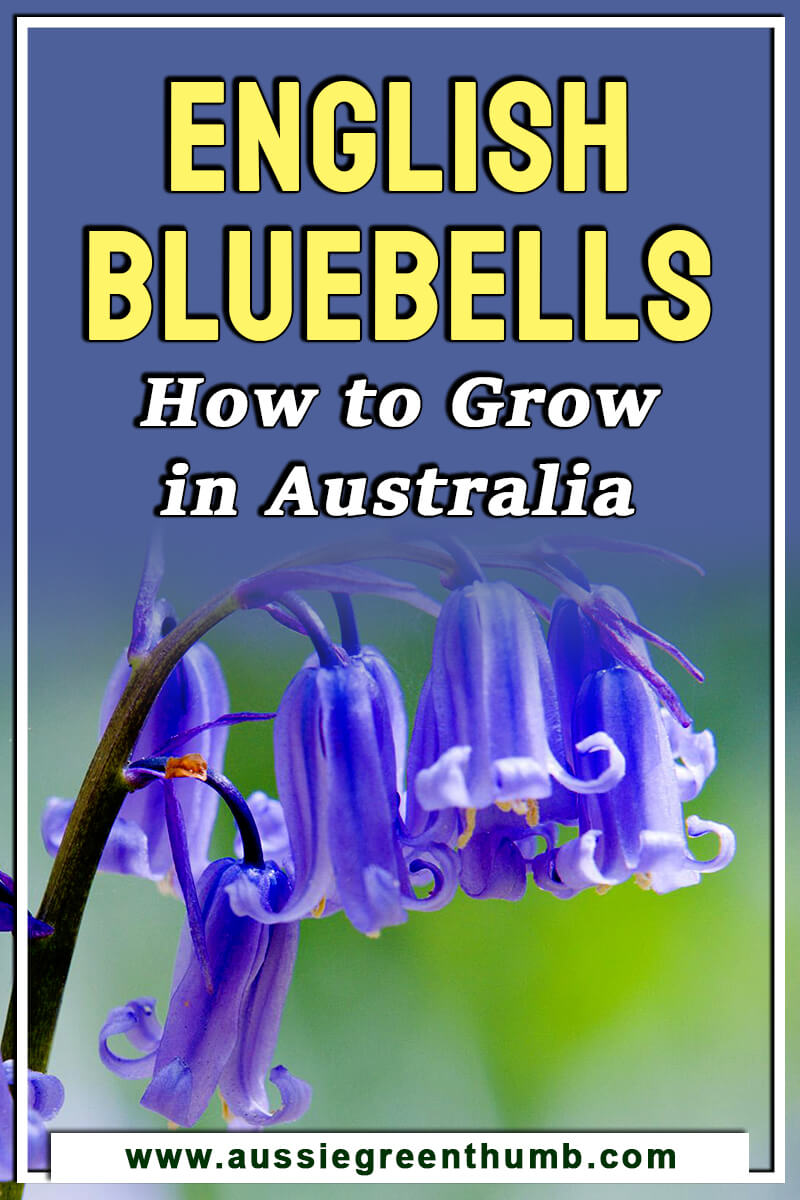
Grow Alluring Bluebells in Your Garden
Bluebells are beautiful plants that are an essential element of our ecosystem. They are not only a source of oxygen, but they also improve soil quality and provide a habitat for many different species.
While being so beneficial, they’re also easy to maintain and care for. So what are you waiting for? Fill your garden with alluring and magnificent bluebells today.
Published on January 8, 2023 by Gary Clarke
Last Updated on February 1, 2024





Hi Gary,
Early this year I tried to buy some but couldn’t. Finished up buying the Spanish ones. 300 from Lambley.
Would like to try again for a seperate area.
Could you recommend some growers/sellers?
And when do they come up for sale?
John Exner
Wentworth Falls, NSW. (Blue Mountains)
Hi John,
I hope your Spanish bluebell is doing great!
I’ve had a look and can only find one online seller at this time but it seems they do deliver which is convenient.
Click here to link to their website where you can find pure English bluebell.
It should be the perfect time to establish the plant now during spring which is fantastic news.
We wish you a happy gardening experience with acquiring and growing your English bluebell.
Gary Clarke